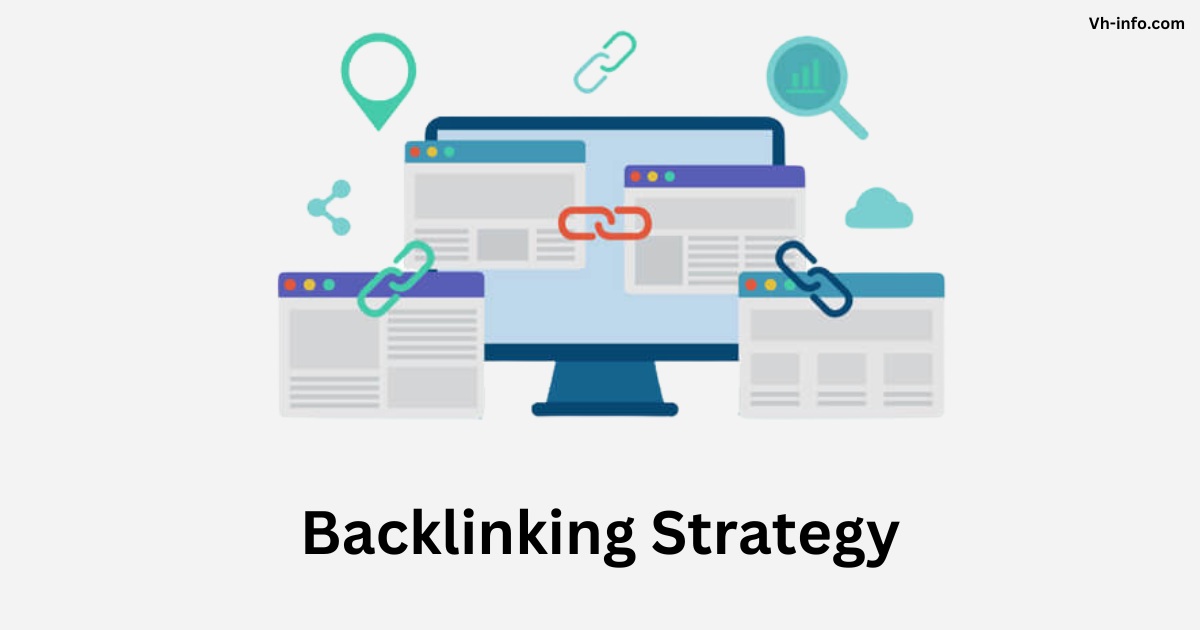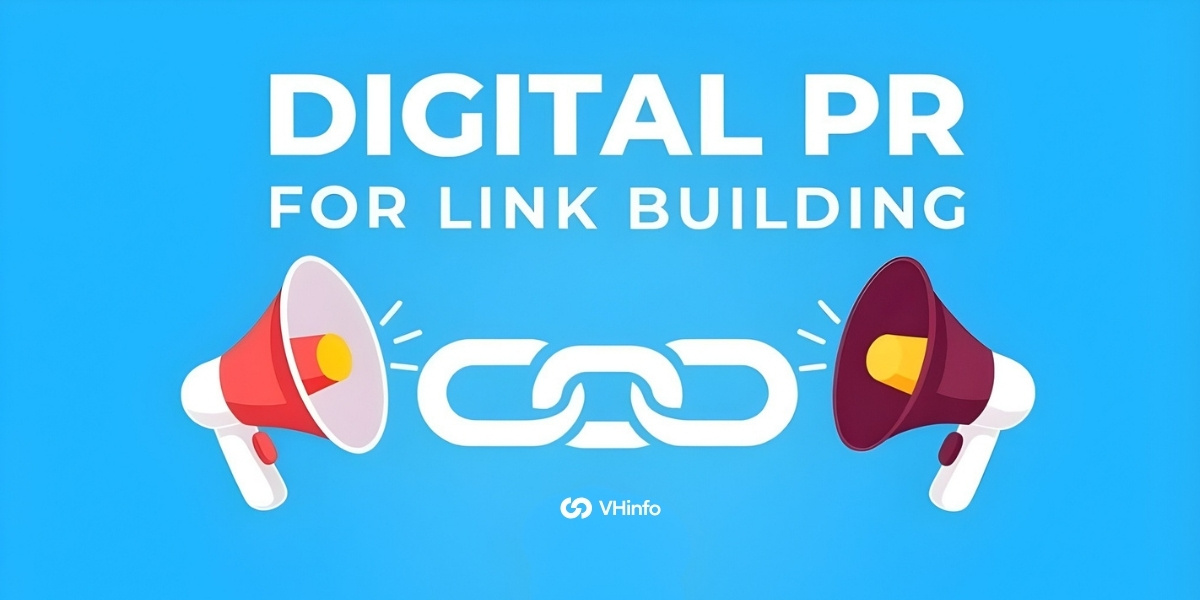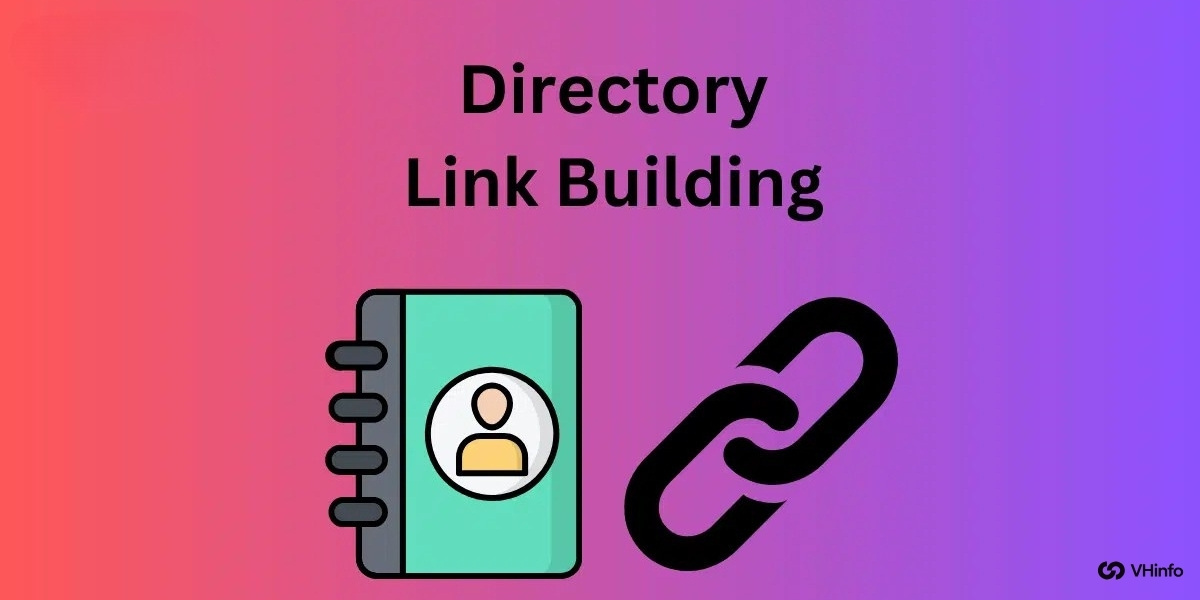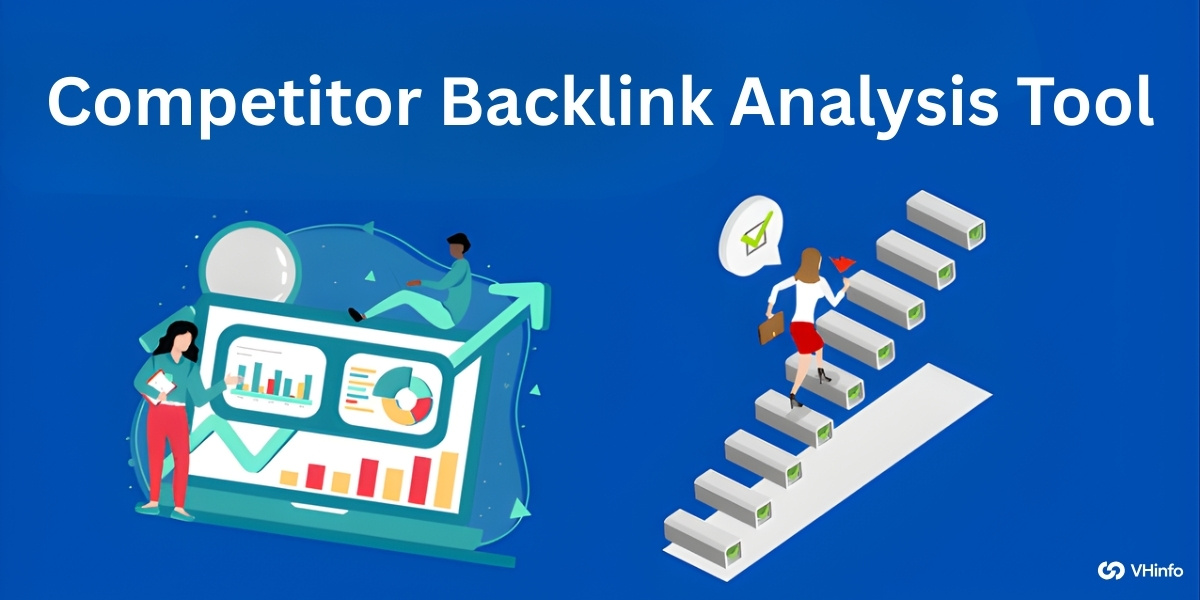Backlinking Strategy: What is it, & Examples
As a SaaS company, you know that backlinks are important for improving your search engine rankings and driving organic traffic to your website. But with so much conflicting information out there, it can be tough to know where to start with your backlinking strategy.
That’s where VH-info comes in. As experts in SaaS link building, we’re here to break down everything you need to know to create an effective, sustainable backlinking strategy that gets results. Let’s dive in.
What is a Backlinking Strategy?
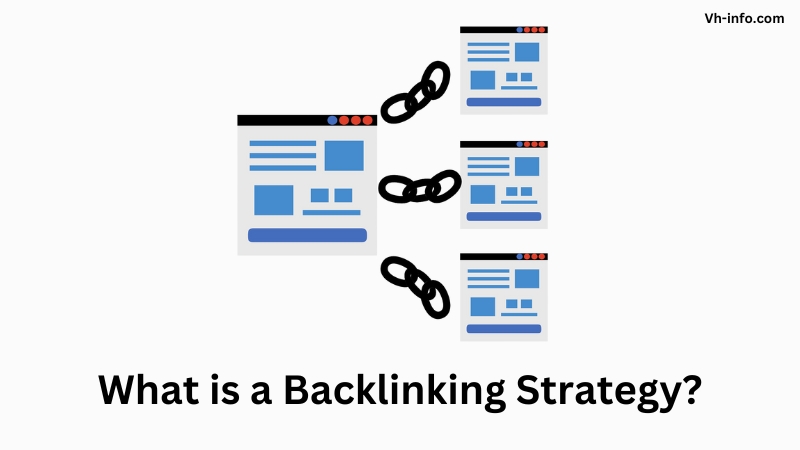
A backlinking strategy is a plan for acquiring high-quality backlinks from other websites to your own. The goal is to improve your site’s authority and relevance in the eyes of search engines like Google, ultimately boosting your rankings for target keywords.
An effective backlinking strategy focuses on earning links naturally by creating valuable, link-worthy content and conducting targeted outreach to relevant sites in your niche. It’s a long-term approach that prioritizes quality over quantity.
Why Backlinking Strategies Are Important?
Backlinks remain one of Google’s top ranking factors. Sites with more high-quality backlinks tend to earn higher rankings and organic traffic.
But the power of backlinks goes beyond SEO:
- Referral traffic: Backlinks help drive targeted referral traffic to your own site
- Brand exposure: Getting mentioned on relevant, high-authority sites boosts your brand’s visibility and credibility
- Relationships: Link building can help you build valuable relationships with influencers and sites in your industry
In short, a solid backlinking strategy is key to the long-term growth of your SaaS business. At VH-info, we specialize in helping SaaS companies like yours build links the right way.
3 Proven Tactics For Building a Content-Driven Backlink Strategy
Content is the foundation of any sustainable backlinking strategy. By creating link-worthy content assets, you naturally attract backlinks over time. Here are three of our favorite tactics:
1) Surveys
Original research, like industry surveys, is one of the most effective types of link bait. Reach out to your audience, gather unique data, and package it into an engaging report. Share your findings and watch the links roll in.
2) Research
Similar to surveys, in-depth studies, and research reports make great link magnets. Dive deep into a trending topic, or challenge in your industry. Uncover new insights and data points. Do relevant keyword research for the blog post. These content assets and resource pages are highly citable if you are able to reach the right target audience.
3) Newsjacking
Is there a hot news story or trend related to your niche? Act fast and publish a unique take or analysis. Timely, newsworthy content can earn a flurry of links, social shares, and referral traffic.
The key to any of these tactics is to create truly original, valuable content that sites will want to link to. At VH-info, our content and link-building teams can help you ideate and execute content assets that drive links.
Link Building Strategies For SEO
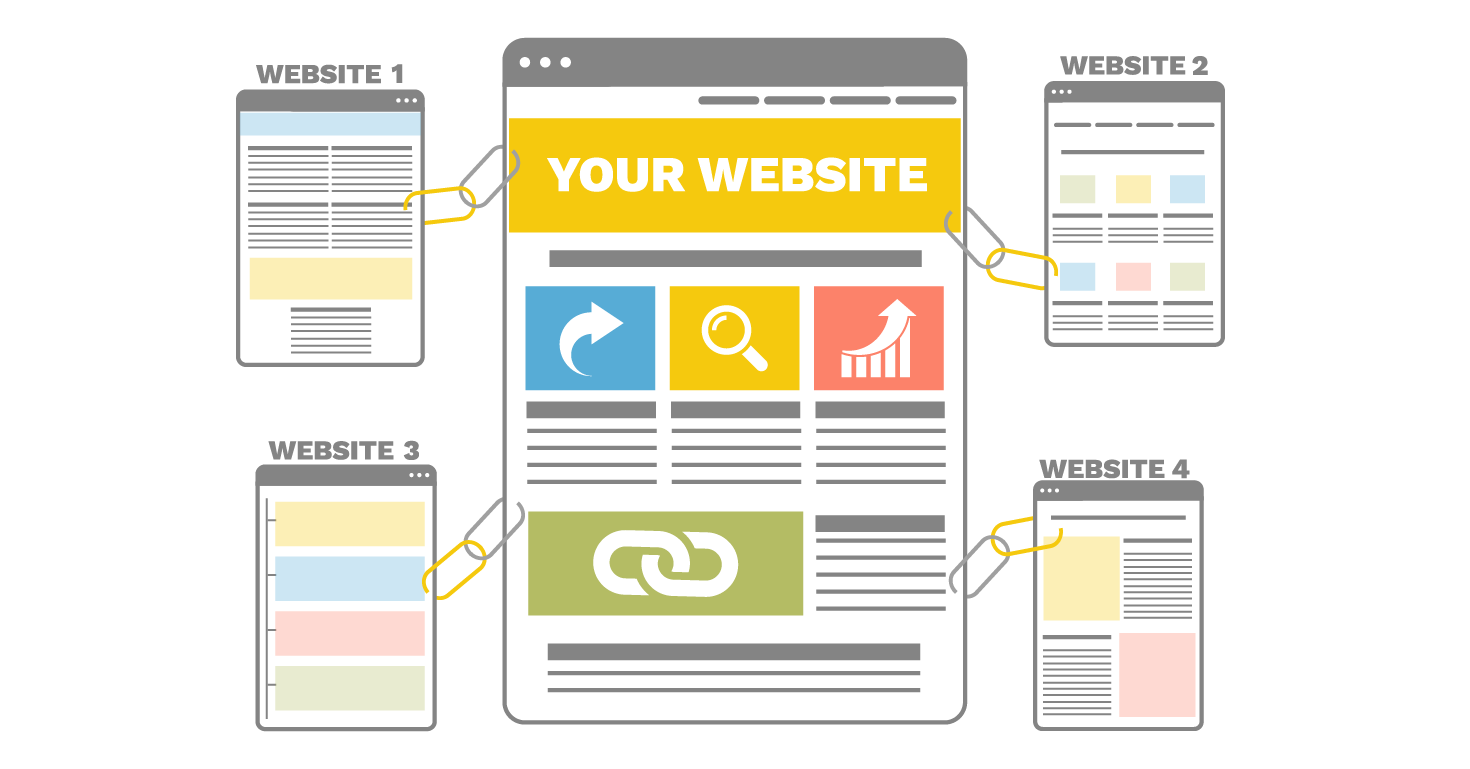
Once you have link-worthy content, it’s time to build high-quality links at scale.
Here are 14 proven link-building strategies we use at VH-info:
- Quality > Quantity: Focus on earning a few high-quality, relevant links rather than chasing after sheer volume. One link from an authoritative site in your niche is worth more than dozens of low-quality links.
- Relevance > Authority: While Domain Authority is important, relevance is even more important. A link from a highly relevant site will drive more qualified traffic and carry more weight with Google.
- High DA > Low DA: All else being equal, links from high Domain Authority sites will have a bigger impact than those from low DA sites. Tools like Ahrefs and Moz can help you evaluate a site’s authority.
- Favor New Domains and IP Addresses Over Already-Linked Domains: Aim to diversify your link profile by earning links from new domains and IP addresses. Links from the same sites have diminishing returns.
- Link to a High-Quality, Internal Page Onsite: Don’t just link to your homepage. Build deep links to valuable pages and content assets across your site. This helps distribute authority and drive traffic to your most important pages.
- Add Value to User Experience, Not Just Anchor Text: Avoid stuffing exact-match anchor text into your links. Instead, focus on adding value to the user with your link placements. Use descriptive, natural anchor text that provides context.
- Make Sure Your Content is Relevant and Placed on Relevant Sites: Only pursue link opportunities that make sense for your brand and audience. An irrelevant link on an off-topic site won’t drive qualified traffic and could even hurt your rankings.
- Place Your Link Early in the Article: Links placed higher up in the content tend to carry more weight and drive more referral traffic. Aim for placements in the first few paragraphs when possible.
- Never Include More than One Link to Your Site in an Article: Don’t be greedy. Limit yourself to one link back to your site per article. Any more could be seen as spammy by Google and the publisher.
- Include Descriptive Anchor Text: Use anchor text that accurately describes the page you’re linking to. Avoid generic phrases like “click here.” But also be careful not to overdo it with exact-match keywords.
- Avoid Keyword Stuffing: Speaking of keywords, avoid stuffing them into your anchor text or content in an unnatural way. This is a red flag for Google and could earn you a manual penalty.
- Include Links to Other High-Quality Sources: Don’t make your guest post or content asset all about you. Include links to other relevant, high-quality resources as well. This shows you’re focused on adding value, not just self-promotion.
- Don’t Write Off the Possibility of Nofollow Link Building: While followed links are ideal, nofollow links from relevant, high-authority sites are still valuable. They drive referral traffic and help diversify your link profile. Don’t discount nofollow opportunities.
- Don’t Get Fixated on Link Building Quantity: It’s not a numbers game. Earning a few dozen high-quality links can move the needle more than hundreds of low-quality ones. Pace yourself and focus on the most relevant, authoritative opportunities.
At VH-info, these are the link building principles and tactics we swear by to improve brand awareness for your brand on google search. Our team can help you implement them to build a strong, diverse high quality backlink profile for your SaaS site.
14 Strategies For Building Backlinks to Your SaaS Website
Need some specific link building tactics to try? Here are 14 of our go-to strategies at VH-info:
- Resource Link Building: Create an in-depth resource or guide related to your niche. Reach out to sites linking to similar resources and suggest yours as an addition. This is a great way to build topically relevant links.
- Broken Link Building: Use tools like Ahrefs or Screaming Frog to find broken links on relevant sites in your niche. Reach out to the site owner, point out the dead link, and suggest your content as a replacement. It’s a win-win.
- Listicles: Listicles are link magnets. Create a “best of” or “top tools” post featuring the best resources in your niche. Reach out to the featured tools and encourage them to link back to the list. Many will oblige.
- Free Tools: Create a free tool or resource related to your SaaS product. This could be a calculator, template, or mini web app. Free tools are incredibly link-worthy and help drive qualified leads.
- Unlinked Brand Mentions: Set up Google Alerts for your brand name and monitor for unlinked mentions across the web. When you find one, reach out and politely ask for a link back to your site. Many publishers are happy to oblige.
- Podcasts: Get interviewed on podcasts in your niche. Most podcasts have a “links from the show” page where you can score a relevant link back to your site. Plus, it’s great exposure for your brand.
- Conferences: Sponsor or speak at industry conferences and events. You’ll often earn a link back to your site from the event page or recap posts. It’s a great way to build relationships and authority.
- Integration Partners: Integrate your SaaS tool with other popular tools in your niche. Reach out to partners and encourage them to link to your integration page or co-marketing content. It’s an easy, mutually beneficial link.
- Common Competitors’ Backlinks: Use tools like Ahrefs to analyze your competitors’ backlinks. Look for patterns and opportunities you can replicate like guest posting on the same sites or creating similar content assets.
- SaaS Directories and Review Sites: Get listed in relevant SaaS directories and on review sites like G2 Crowd or Capterra. These sites are often well-indexed by Google and can drive referral traffic. Encourage happy customers to leave reviews.
- SaaS Partnerships: Partner with other non-competing SaaS companies in your space on content, webinars, or co-marketing campaigns. You’ll both earn relevant links and exposure to new audiences. It’s a mutually beneficial relationship.
- Widget Link Building: Create a useful embed code or widget related to your SaaS tool. When other sites use your widget, they’ll often link back to you as the source. Just be sure to include a link in the embed code.
- Digital PR For Link Building: Create newsworthy content, like data reports or surveys, and pitch them to journalists and publications. If they cover your story, you’ll earn high-authority links and tons of brand exposure.
- Reviews And Testimonials: Offer to write testimonials or reviews for products you use and love. Many sites will include a link back to your site as the source. Just be authentic and disclose your relationship.
These are just a few of the many link-building strategies we use at VH-info to help our SaaS clients build high-quality links. The key is to focus on tactics that align with your brand, audience, and goals.
How to Build a Clean Backlink Strategy?
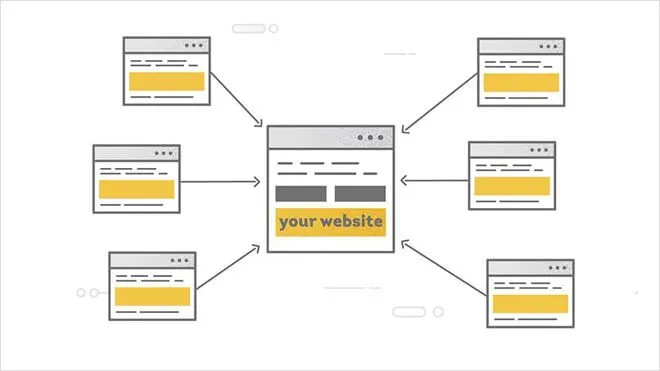
A clean, natural backlink profile is key to long-term SEO success. Here are a few tips for keeping your strategy above board:
- Focus on earning editorial links from relevant, high-quality sites
- Create link-worthy content that naturally attracts inbound links
- Build relationships with sites in your niche and look for mutually beneficial opportunities
- Avoid buying links or participating in link schemes
- Regularly audit your backlink profile and disavow any spammy or low-quality links
Is it Possible to Do SEO Successfully Without Backlinks?
While it’s possible to rank for some long-tail keywords without many backlinks, it’s very difficult to be competitive in medium to high-volume keywords without a strong link profile. Backlinks are a key trust signal that Google uses to evaluate a site’s authority and relevance.
That said, backlinks aren’t everything. On-page optimization, technical SEO, and content quality all play a role in rankings as well. But if you want to be competitive in your niche, link-building needs to be a key part of your SEO strategy.
Why You Should Be Extremely Careful With Backlink Strategies?
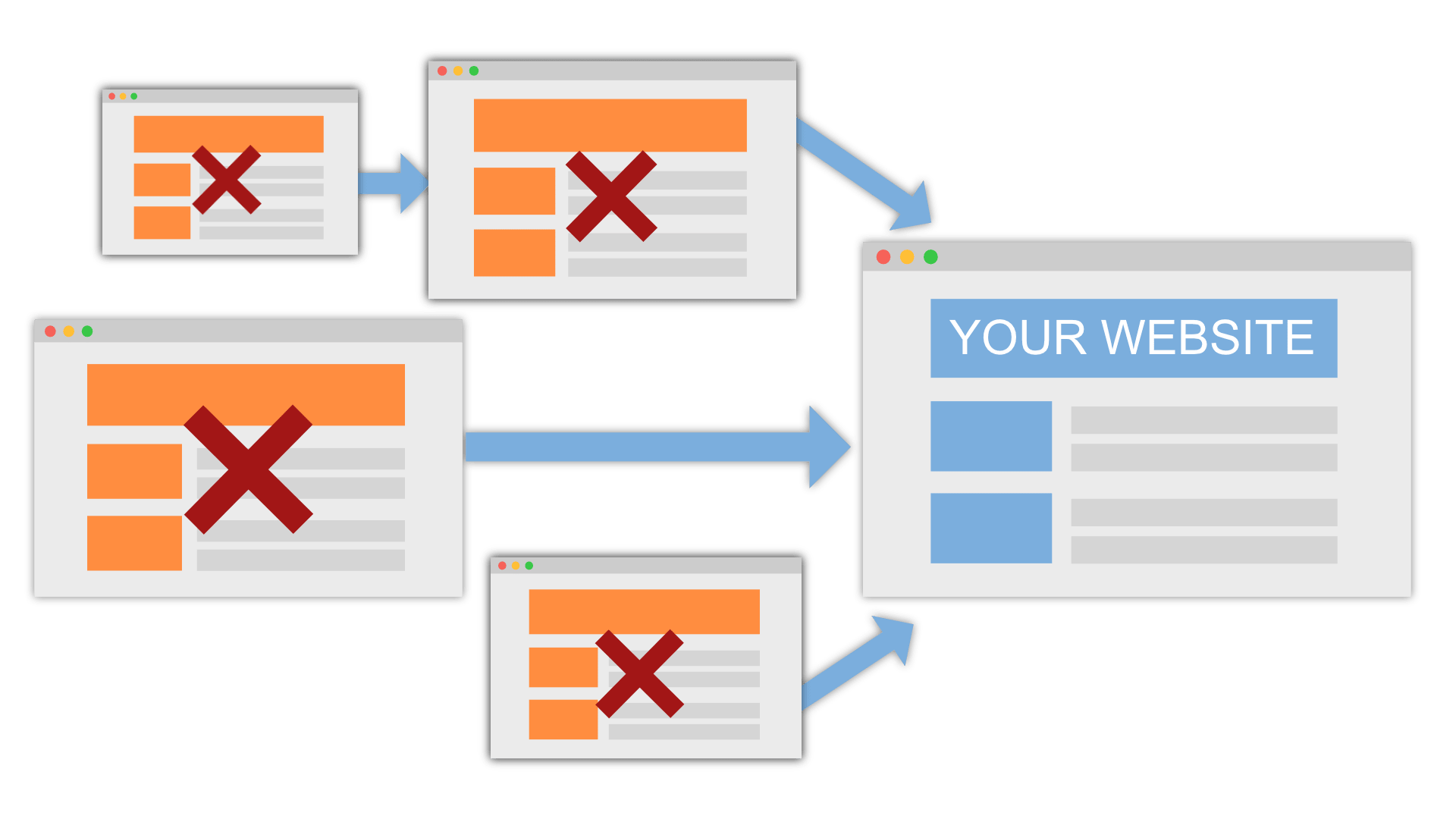
While backlinks are important, not all link-building tactics are created equal. Some strategies can do more harm than good.
Here’s what you need to know.
Buying Backlinks
Buying links is against Google’s Webmaster Guidelines and can result in a manual penalty. Avoid any service or scheme that offers to sell you links. It’s not worth the risk.
What’s Google’s Deal With Backlinks?
Google sees backlinks as a “vote of confidence” from one site to another. But they want these votes to be earned editorially, not bought or manipulated. Any link intended to manipulate rankings goes against their guidelines.
How Does Google Know?
Google is constantly improving its ability to detect and devalue unnatural links. They look at factors like:
- The source and quality of the linking site
- The context and placement of the link
- Anchor text and other link signals
- The scale and velocity of link acquisition
Sites with unnatural link patterns or suspicious spikes in link growth may be flagged for manual review.
What Google Wants?
Google wants to see a natural, diverse link profile that’s earned through quality content and real relationships. They want links that add value for users, not just manipulate search rankings.
Focus on creating great content, building genuine relationships, and earning links naturally over time. It’s a slower process, but it’s the only sustainable way to build links in the long run.
Consequences of the Google Penalty
Sites caught engaging in link schemes or having a high volume of unnatural links may be subject to a manual action or ranking penalty from Google. This can result in a significant drop in organic traffic and rankings.
If you’ve been hit with a link-related penalty, you’ll need to go through the process of link removal and disavowal to clean up your link profile and submit a reconsideration request. It’s a time-consuming and stressful process.
That’s why it’s so important to be proactive about your link strategy and only engage in tactics that align with Google’s guidelines. At VH-info, we can help you avoid penalties and build a clean, natural link profile that stands the test of time.
Backlink Strategy Example
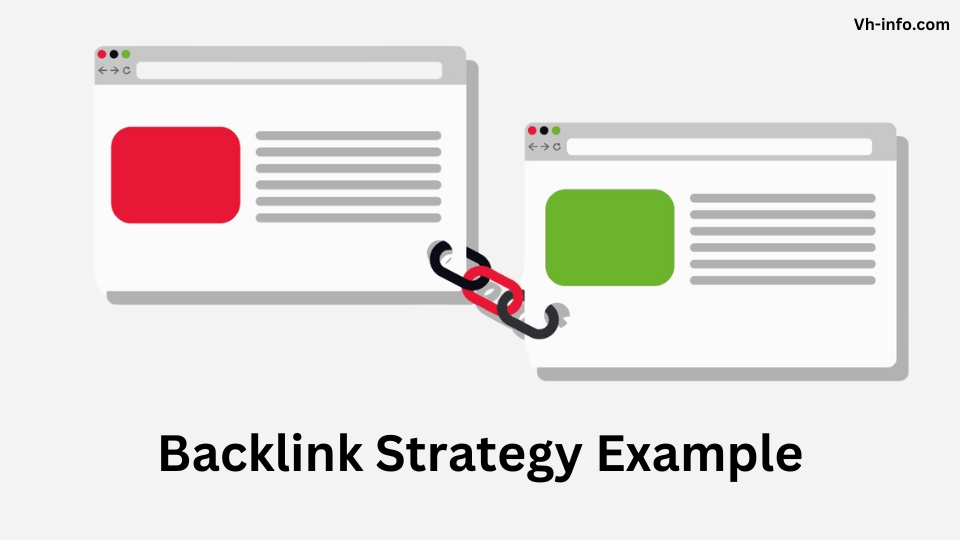
Wondering what an effective SaaS backlink strategy looks like in practice? Here’s a simplified example:
- Month 1: Publish an in-depth industry survey and promote it to your email list and social media following. Earn a few high-quality links from industry publications and blogs. Make sure to write a friendly email and don’t be too pushy.
- Month 2: Turn the survey into a downloadable PDF report and reach out to sites linking to similar research, suggesting your report as an additional resource. Secure 5-10 resource links.
- Month 3: Publish a “Top 10 Tools” listicle featuring the best software in your niche. Reach out to featured tools and encourage them to link back to the list. Earn links from 3-5 featured companies.
- Month 4: Guest post on 2-3 high-authority blogs in your industry, linking back to your survey or other relevant content assets. Secure 2-3 in-content links.
- Month 5: Create a free tool or calculator related to your SaaS product. Promote it to your audience and relevant communities. Earn links from 10+ sites organically.
- Month 6+: Rinse and repeat, focusing on a mix of content creation, targeted outreach, and relationship building. Continuously monitor and clean up your link profile as needed.
The specifics will vary based on your niche and audience, but the key principles are the same: create valuable content, build real relationships, and earn links naturally over time.
FAQ’s:
Still have questions about backlinking strategies? We’ve got answers to some of the most common ones we hear at VH-info:
What Makes a Backlink High-Quality?
A high-quality backlink comes from a relevant, authoritative site in your niche. It’s earned editorially, not through manipulation or payment. The link is placed in the context of valuable content and uses natural, descriptive anchor text.
How Often Should You Audit Your Backlink Profile?
We recommend auditing your backlink profile at least quarterly. Use tools like Ahrefs or Moz to identify and disavow any low-quality or spammy links. Staying on top of your link profile can help you avoid penalties down the road.
Which Backlink is Most Powerful?
The most powerful backlinks come from high-authority, relevant sites in your industry. A single link from a DR 80+ site will carry much more weight than multiple links from low-authority sites.
Can Backlinks From New Websites Improve SEO?
Yes, backlinks from new websites can still be valuable, as long as they’re relevant and high-quality. Don’t discount a link opportunity just because the site is new. Focus on relevance and authority over age.
What Are the Risks of Black Hat Backlinking Strategies?
Black hat backlinking tactics like buying links or participating in link schemes come with a high risk of Google penalties. These penalties can tank your organic traffic and be difficult to recover from. It’s not worth the short-term gains.
Is Guest Blogging Still an Effective Backlink Strategy?
Yes, guest blogging is still an effective way to build high-quality backlinks when done right. Focus on writing for relevant, high-authority sites in your niche and use guest posting as a way to build relationships and reach new audiences, not just as a link-building tactic.
How to Approach Influencers For Backlinking Opportunities?
Start by building genuine relationships with relevant influencers. Engage with their content, share it, and add value through comments. When you have a solid rapport, reach out with a personalized, mutually beneficial pitch for a backlink opportunity.
Can Writing Product Reviews Help in Gaining Backlinks?
Yes, writing honest and detailed product reviews can attract backlinks. If you provide valuable insights, brands, and other sites are more likely to link to your review as a helpful resource for their audience.
Is It Necessary to Remove All Negative Backlinks?
Not always. Focus on removing spammy, low-quality links that could hurt your site. But a few less-than-perfect links among many high-quality ones won’t necessarily harm your rankings. Prioritize cleaning up your overall link profile.
How Can I Build Backlinks Using Link Roundups?
Find popular link roundups in your niche. Create content that fits their theme and submit it for consideration. If featured, you’ll gain a high-quality backlink and exposure to the roundup’s audience.
How Do Social Media Links Impact Your Backlink Profile?
Social links can drive traffic and increase visibility but don’t directly impact search rankings like other backlinks. However, more social shares can indirectly lead to more backlinks from sites that discover your content through social media platforms.
What is the Significance of Internal Linking in Backlink Strategies?
Internal linking helps spread link equity to important pages on your site. Strategic internal links guide users and search engines to your most valuable content, boosting its relevance and authority in your overall link ecosystem.
How Can I Gain Backlinks From .edu or .gov Domains?
Create valuable resources that appeal to students or government employees, such as research guides, case studies, or free tools. Promote these to relevant .edu or .gov sites and build relationships with their webmasters to earn backlink opportunities.
Should I Focus on Building Links or Creating Valuable Content First?
Both are important but prioritize creating link-worthy content first. High-quality, valuable content will naturally attract links over time. Building links to thin or low-quality pages is less effective in the long run. Let your content lead the way.
Conclusion
Building a strong backlink profile is essential for any SaaS company looking to improve its search rankings and drive organic traffic.
In the SaaS industry, you can get good backlinks by creating valuable content, building real relationships, and using various strategies. Quality is more important than quantity. Follow Google’s rules, check your backlinks often, and adjust your plan based on outcomes. By adding value consistently, establish a strong backlink profile for your SaaS company to succeed.
At VH-info, we specialize in helping SaaS companies navigate the complex world of link building. Our expert team can guide you in developing a sustainable, effective backlinking strategy tailored to your unique needs and goals.
Reach out to learn more about how we can help you build the links you need to succeed.
